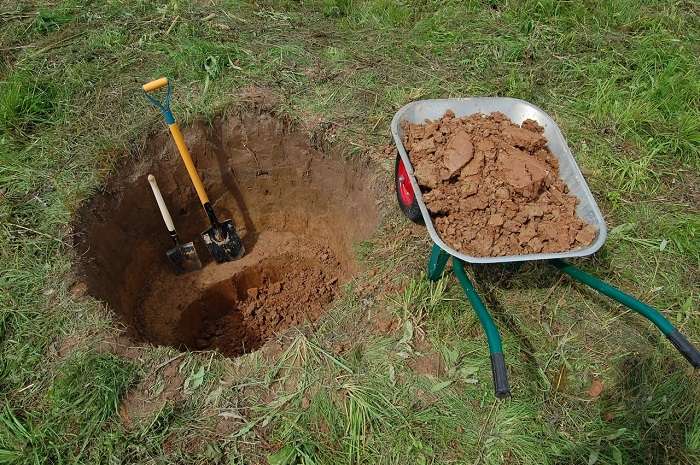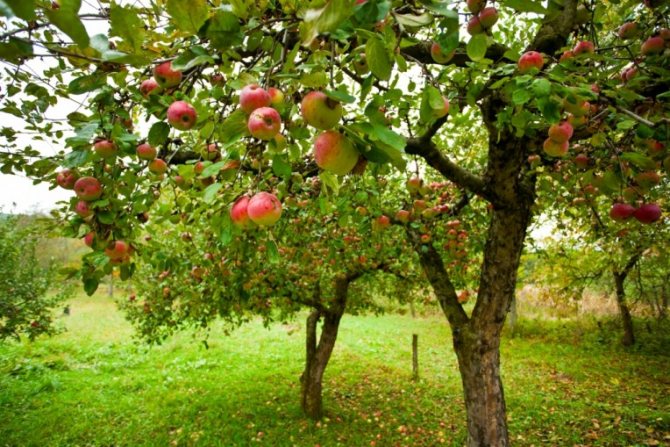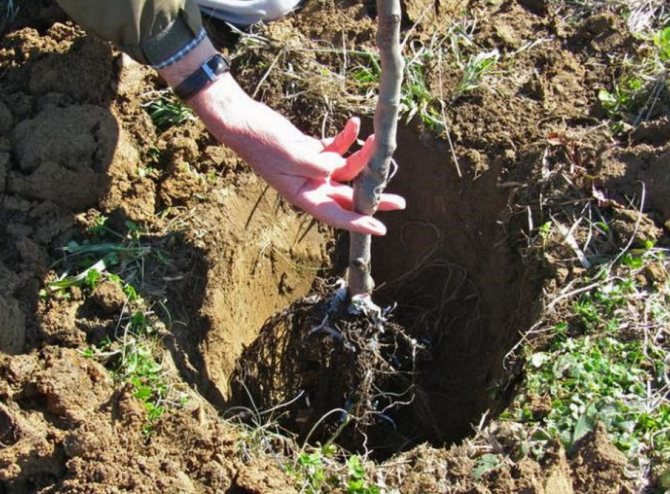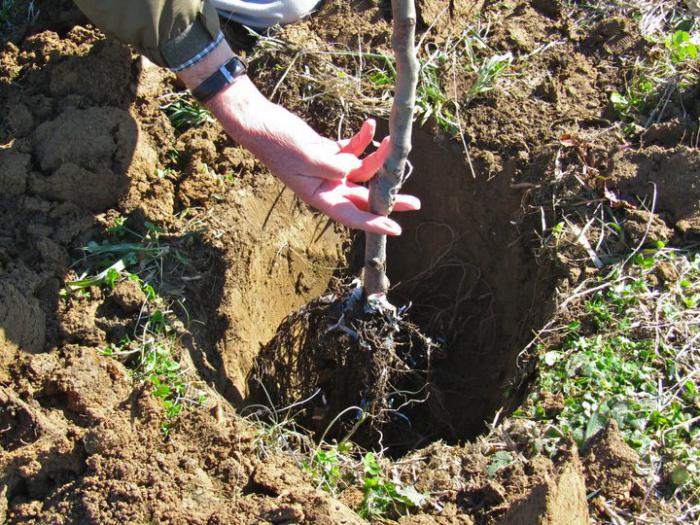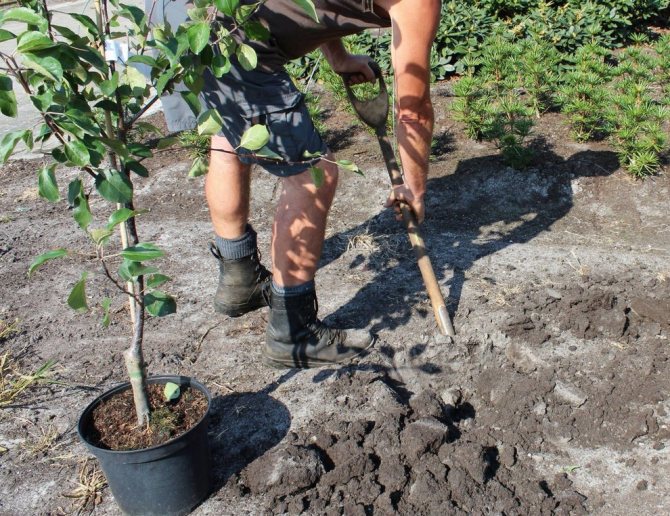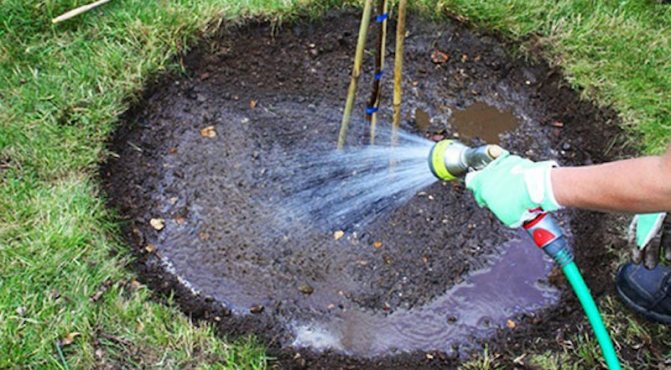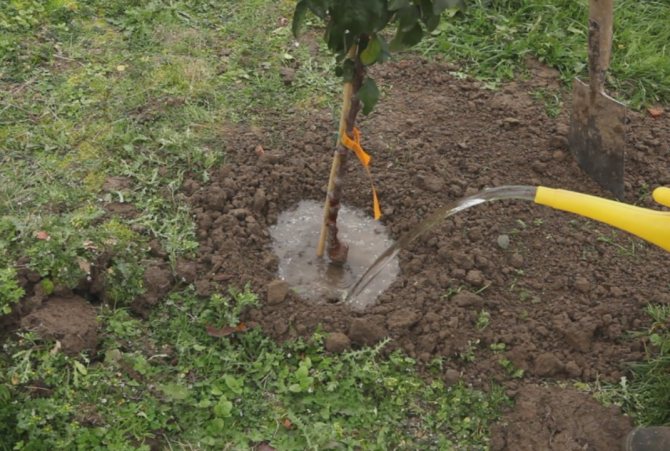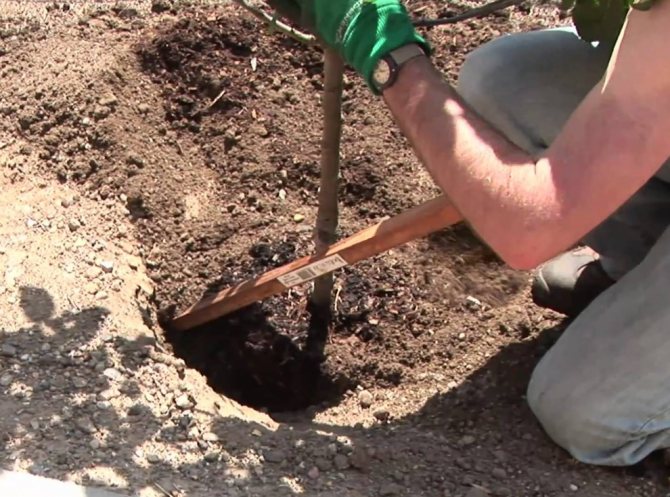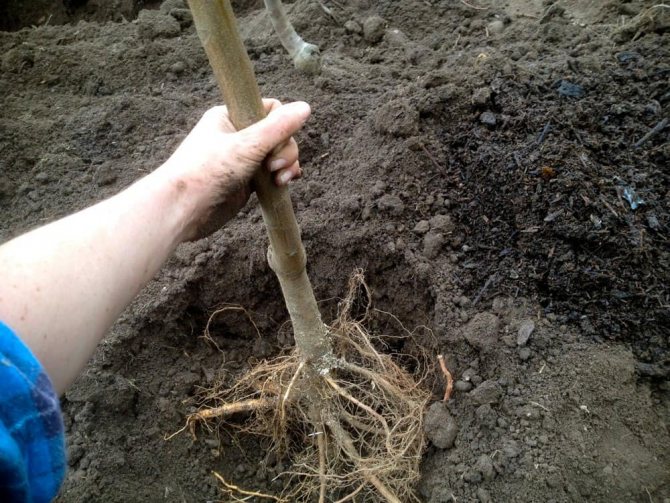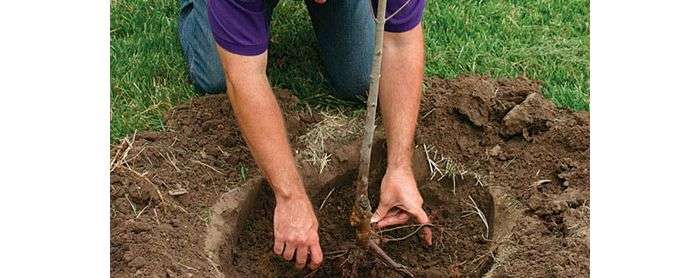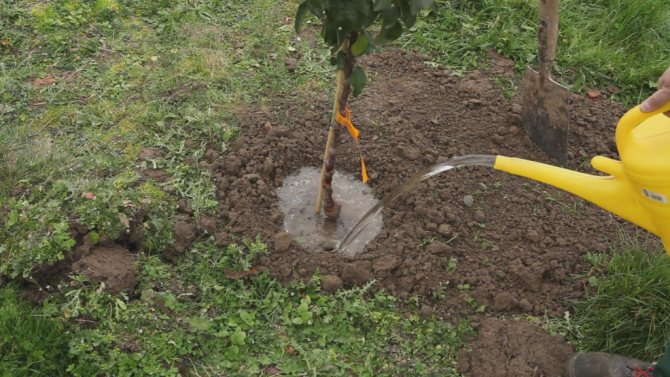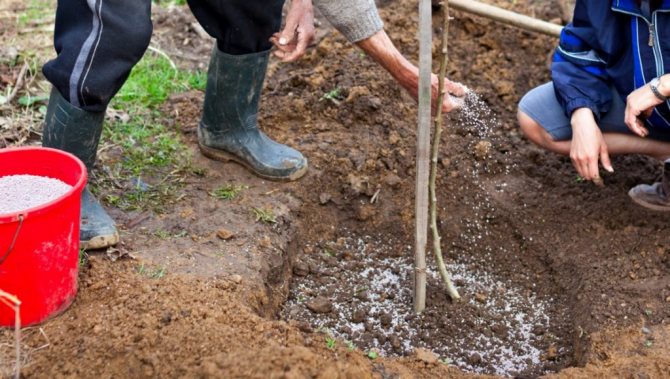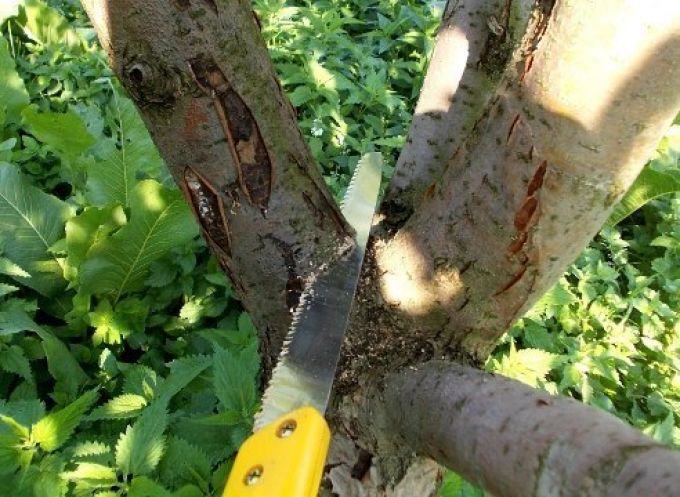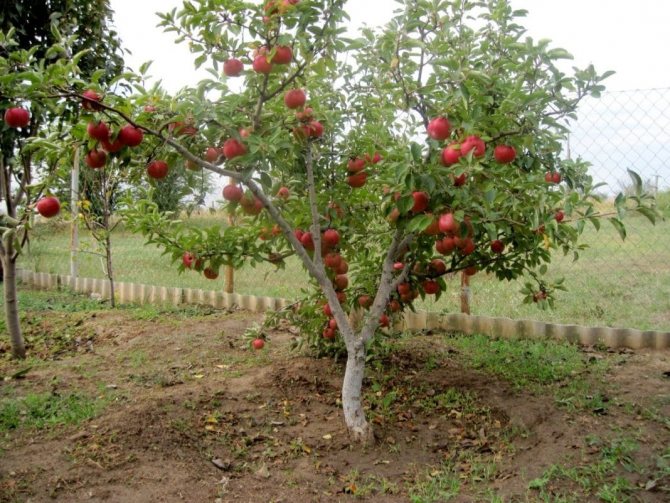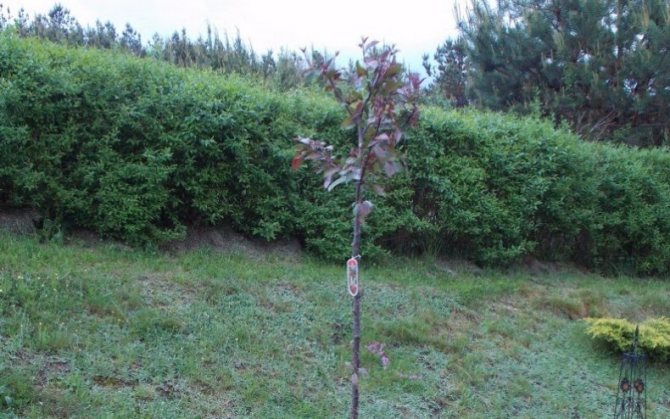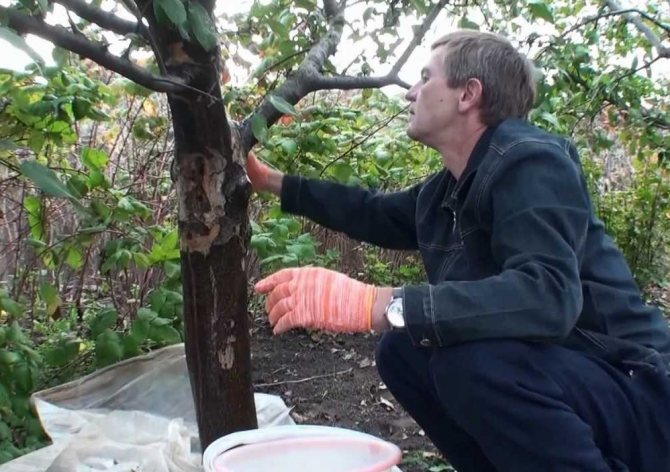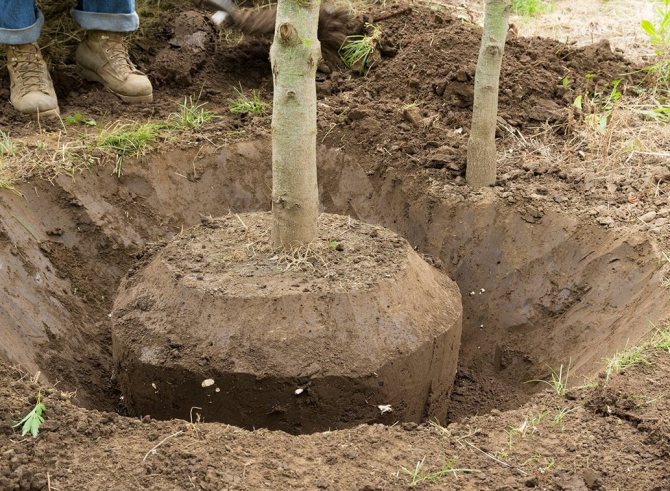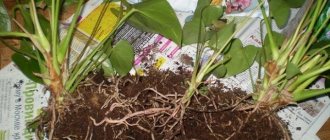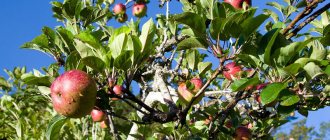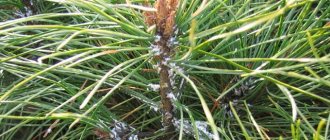Transplanting is a process that interferes with the life of a tree. If done incorrectly, the transplant can not only damage the apple tree, but also destroy it.
If each tree is immediately planted in the right place, replanting can be avoided.
Beginners summer residents often neglect this rule. But even experienced gardeners sometimes have situations in which they have to transfer apple trees from place to place.
The most common question is "Is it possible and how to transplant an apple tree for 3 - 5 years?" arises,
when to transplant when:
- Thickened plantings of fruit trees;
- Incorrect assessment of the soil structure;
- Redevelopment of the garden.
Thickened plantings - the result of incorrect calculations, which are based on an incorrect assessment of the real growth of apple trees.
Trees planted close to each other thrive and prevent each other from developing well and bearing abundant fruit.
It happens that the apple tree is located in a good place, it seems that nothing prevents it from growing and developing.
This does not take into account the composition of the soil, water table or spring flooding plot.
With prolonged exposure to water on the root system, the tree is inhibited, exposed to fungal and bacterial infections. If you do not transplant the apple tree in time, the ending will be sad.
Redevelopment Is one of the common reasons for transplanting fruit trees. In the process of living, the owners of suburban areas have the need to build previously unplanned buildings: gazebos, verandas, garages, sheds. Often the apple tree can become a hindrance, it has to be moved.
RULE: The layout of the orchard is the key to good harvests!
Plan the location of the apple trees wisely. A rational approach to the planning of a summer cottage can greatly facilitate the care of an orchard.

Additional buildings can be the reason for replanting the apple tree.
The reasons for the transfer of trees can be different.
To transplant correctly, Need to know:
- At what age the tree will easily tolerate a transplant;
- Is it possible to transplant an old apple tree;
- What is the most favorable period for transplanting fruit trees.
Why are apple trees transplanted?
There are certain reasons for transplanting fruit trees - the procedure will help preserve their fruiting, growth and further development.
Important! If the calendar dates for the autumn transplantation have come, but full-fledged green leaves remain on the tree, it means that vital processes continue in it.
—
in this case, the transfer is prohibited.
Plant breeders distinguish three main prerequisites when sufficiently mature plants (growing periods vary from 3 to 5 years) are transferred to another location:
- Thickened fit - this is the result of incorrect calculations and incorrect assessment of the growth and development of the root system and crown of plants. Trees that have been planted too close will have a negative impact on each other's development and fruiting.
- Error in the selection and assessment of the soil structure... If the composition of the soil can be adjusted by the introduction of fertilizing or additional soil components (peat, sand, clay, etc.)- depending on what kind of soil mixture was originally on the site), then with a close occurrence of groundwater or with spring flooding of the garden area, the roots of apple trees will either rot or experience stress from improper gas exchange. Without an emergency transplant, trees, at best, will begin to stop growing and not set fruit, and at worst, they may die from fungal root diseases or bacterial lesions.
- Redevelopment of the garden, the construction of additional buildings on the site. Such situations, as a rule, cannot be predicted during the initial planning of cultural plantings, but they arise quite often, especially among newly-born summer residents. The main thing is to follow the rules for transplanting mature trees.


Regional features
The timing and method are determined by the climatic and soil conditions in the region where the garden plot is located.
Moscow suburbs
Terms - September-October. Soil temperature should not be lower than 8 ° C.
Gardeners living in the Moscow region take into account the depth of groundwater.
- If the distance between groundwater and the soil surface is significant, then the tree can be transplanted anywhere.
- If it is less than 1.5 m, and there are no hills on the site, then a hill must be poured at the landing site.
Landing site selection criteria
Before transplanting an apple tree, you should choose the right place for further growth and development of a fruit plant:
- As mentioned above, groundwater that lies close to the surface can cause irreparable damage to the plant's root system, therefore it is worth carefully assessing the moisture content of the soil at a potential landing site.
- Open vented areas should be avoided. - trees will not be able to protect themselves from strong gusty winds, especially during the period of adaptation to a new place.
- Loamy soil is ideal for an apple tree.... If you plant a tree in poor soils, then you should not count on a bountiful harvest. Clay, peat and sandy soils in their pure form are also not suitable.
If these criteria are met, you can be sure that the apple tree will quickly adapt, get stronger and begin to bring a rich harvest.
Important! If the personal plot does not meet the above requirements, then fertilization, soil drainage or the construction of artificial embankments will be required.
What to do if the roots are damaged
The health and strength of an apple tree is in direct proportion to the state of the root system. If it cannot fully realize its suction and conductive functions, the tree may not take root.
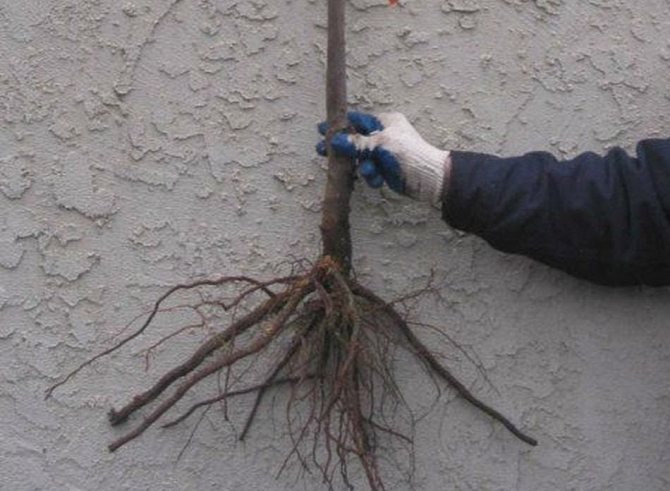

The root system of a tree consists of tap roots, on which fibrous roots are located. The latter are quickly restored, so after digging up all the broken, torn off and sticking out of the earthen clod roots are cut and lubricated with an antiseptic.
When to replant a tree
In order for the transplanting process to take place without stress for the plant, it is necessary to choose the right timing for the work.
In the spring
Spring is the best time for transplanting fruit plants. The procedure must be carried out before the buds appear on the branches. If forecasters admit the likelihood of recurrent frosts, then you should wait with the transplant so as not to injure the tree. At the bottom of the planting pit, the soil temperature should be around + 10 ° C. Optimally prepare the groove in the fall.
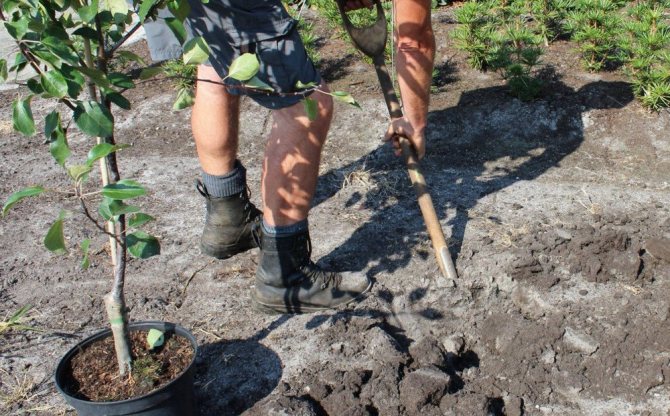

The tree in the process of manipulation will inevitably lose part of the root system, since an apple tree aged 4 years or more already has a rather massive rhizome and it is difficult to remove it from the soil without damage. For these reasons, it is necessary to create the most comfortable conditions for the early adaptation of the plant to a new place.When the pit is ready, it is necessary to pour nutritious soil into it and close it on top with boards or insulating materials.
In autumn
Experienced gardeners advise replanting the apple tree in late autumn, around October. Sap flow during this period slows down greatly, since the tree is preparing for winter rest, and there is no need to support the growth and development of fruits and leaves. But if the autumn was dry, without heavy rainfall, then it is best to postpone the transplant until the spring - without sufficient moisture, the apple tree will not be able to survive the long winter.
Check out the peculiarities of planting apple trees in the fall.
The nuances of the autumn transplant:
- the tree must completely shed the foliage, the fruits must be harvested;
- transplant activities must be completed 14 days before the onset of stable frosts.
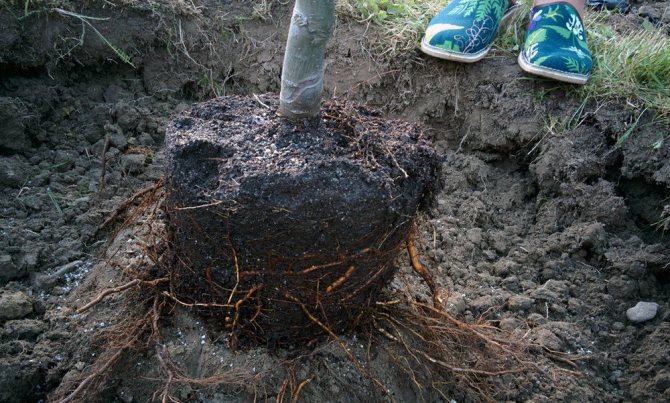

In summer
In the summer months, experts do not recommend transplanting plants, since this process will be the most traumatic for the plant. But there are exceptions to each rule, so it should be borne in mind that one-year (maximum three-year) apple trees, if necessary, can be transferred from one place to another. However, a favorable summer transplant result is not guaranteed.
Behold at the root
No wonder they say that the tree is kept by its roots. Thanks to the root system, the plant receives water, nutrients and useful trace elements. Together with the trunk, leaves and branches, the root forms a single living organism.
Root trauma in the transplant process can lead to disastrous results. To properly transplant an apple tree, you cannot do without knowledge of the theory.
It is necessary to consider what a root is, what parts it consists of. The apple tree has a tap root system. At the initial stage, the seedling forms one taproot. Then additional roots begin to form.
Horizontal skeletal grows, then vertical and fibrous. Together they form a single root system for the apple tree.
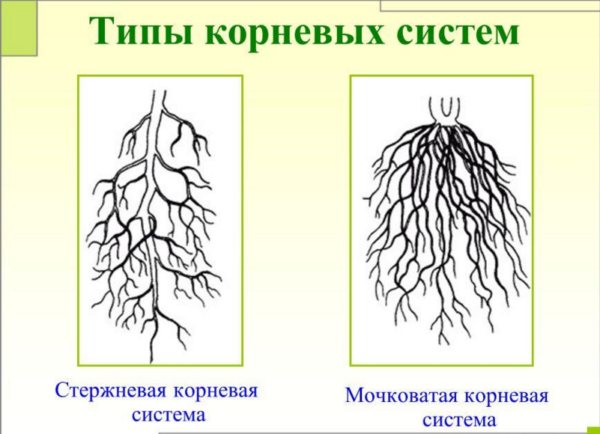

Types of root systems.
By functionthat the roots fulfill, they are of two types:
- Suction.
Responsible for the absorption of nutrients fibrous, overgrown roots... Their thickness is small, but the influence on the vital activity of the tree is enormous.
This group of roots is actively regenerated in the event of damage, and is able to quickly restore the number of roots necessary for the successful life of the apple tree.
- Conductive.
The conductive function is carried by the roots of a large cross-section - rod and skeletal... They transfer water and minerals to the trunk, branches and leaves. In this type of roots, the accumulation of nutrient organic substances occurs.
Since the suction roots are located on the pivotal roots, it is the conducting roots that organize the growth of the suction roots. They can be up to twelve meters in length. It is thanks to this type of roots that the tree is held in the ground.
It is important to remember that the work of both types of roots occurs simultaneously, the functions of all roots are inextricably linked with each other. Together they form a system, the existence of which is impossible if one of the types stops working.
Simply put, if all the fibrous roots are damaged, the apple tree will die... If the tap and skeletal roots are damaged, the fibrous roots will not be able to exist separately, which will also lead to the death of the tree.
The process of replanting a tree
The process consists of two important procedures: extracting a fruit crop from a stationary growth site and moving it to a new location.
Digging technology
The 5-year-old apple tree must be transplanted collectively so as not to damage the massive root system.
Did you know? To ensure the normal functioning of the thyroid gland, it is enough to eat the seeds of one apple, which contain the daily rate of iodine.
The procedure goes like this:
- two days before transplanting, the plant is watered abundantly;
- mark the orientation of the tree relative to the cardinal points;
- dig in a tree - the deeper the digging is carried out, the more you will then have to round off the clod of earth;
- under a lump of earth, as a lever, they put a scrap, a board and raise it, while examining it;
- the roots protruding beyond the coma must be cut off with sharp scissors;
- using a lever, the plant is completely removed to the surface and, placing it on a tarp, is transferred to a new planting site;
- experts recommend making a mark on the trunk where it touches the ground.
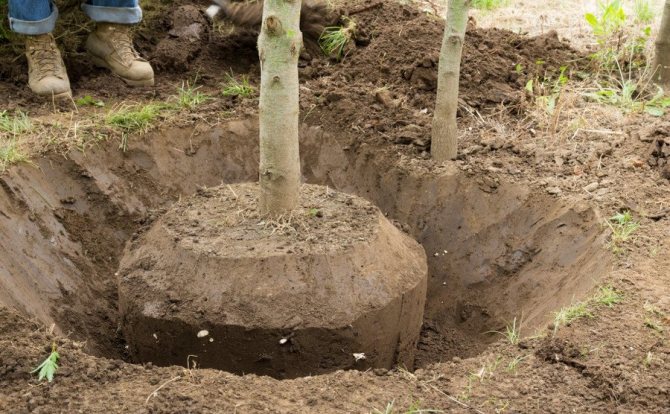

Landing in a new location
It is necessary to drive stakes around the plant for the subsequent fixation of the trunk, fill the free space of the pit with humus, mulch the soil surface, and securely fix the apple tree to the supports. Carefully consider the orientation of the tree in relation to the cardinal points - it is necessary to observe it in a new place, so that it would be easier for the plant to go through the adaptation process.
Learn how to sprout an apple tree from a branch.
After moving on the apple tree, branches damaged during transshipment are removed, and the cuts are processed with garden pitch. Mature trees (4 years or more) need especially careful care, otherwise the plant may die in a new place.
Subtleties of tree transplantation
Transplanting an apple tree means taking care of it with the utmost responsibility. There are several rules for this procedure. It is forbidden to transplant a culture that is more than 15 years old. Trees with broken trunks are not touched. They have weakened immunity. In autumn or spring, they observe the norm - in the spring there should not be foliage yet, in the autumn it should completely fly around.
On a note!
Before winter, the root soil is insulated before the cold comes.
It is impossible to violate the terms of the transplant. In the first year, the branches must be pruned. Growth rate is carefully controlled. For all manipulations to be successful, it is important to have:
- garden shovel;
- pitchfork;
- stakes made of metal or wood;
- strong rope;
- cloth or bag;
- garden shears.
You need to work with mature plants as a team. It is difficult for one person to deal with a heavy, fragile load.
Annuals
In practice, it is rare to find transplanted annual apple trees. Such young seedlings cannot be found on sale. They are grown by hand from scratch. When there is a need to transplant a one-year-old, then it must be carefully dug out of the ground so as to fundamentally injure the root system. This is not harmful, but beneficial for a young plant.
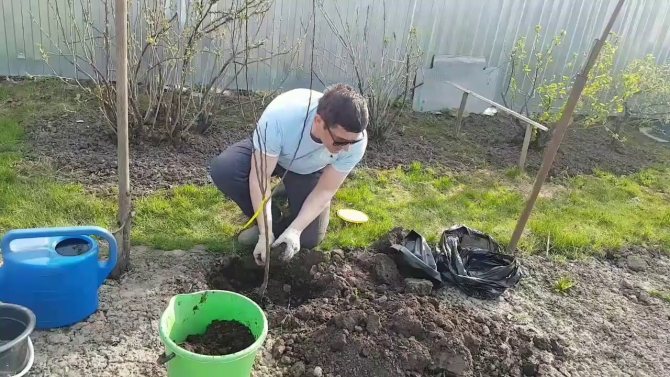

In the new place, about 12 branches will be formed, and many thin fibrous roots will begin to actively develop. The root system will form superficially, which contributes to the excellent absorption of nutrients important for growth and development. This has its own plus for the gardener. It is easier to control the growth process. If at first the seedling grew in a container, then the root will not be injured during transplantation. Accordingly, you need to dive the main root at a distance of 20 cm relative to the root collar. This stimulates the development of skeletal horizontal roots. There are a number of points to consider:
- The transplant will not be difficult. It can be done alone.
- The tree quickly adapts to its new location.
- The plant can only be destroyed if the root collar is broken. This will stop the supply of power to the barrel.
- Be sure to watered.
- An autumn transplant of one-year-olds is done either upon sale, or if poor-quality soil was originally taken.
- The procedure will consist in transferring young seedlings from the school to the place where they will be further vaccinated.
- Digging can be carried out in the last days of September or early October.
- A young apple tree, the core root is cut off to a third of the length.
- The transplant contributes to the formation of a wide suction-type root system.
- The foliage is completely removed.
- If the stock is located in a deep box, then it should stand in a cool room until spring.
- The roots should not dry out / become waterlogged. This can be prevented if the roots are covered with sawdust, wrapped in foil.
- Transplantation to a permanent place of residence will occur in early spring. Vaccination is done after full adaptation.
There will be no problems with the culture if you follow the transplant rules. So it will actively grow and bear fruit in the future.
Two to three years
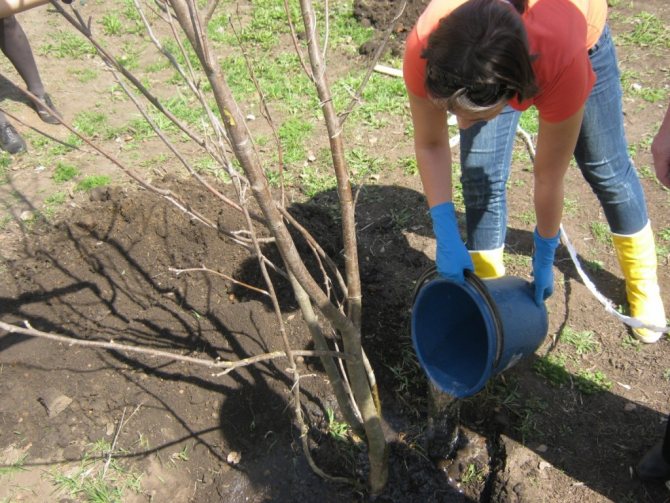

One-year-old rootstocks are vaccinated. When they reach the age of 2-3 years, they can be dug up to sell or transplant. The root system has enough branching, which is important for its viability. There are about 40 branches of the skeletal type. The transfer procedure is serious and requires responsibility.
On a note!
Choosing plants with an open root system increases the risk of losing the suction roots by up to 80%.
Therefore, preference is given to crops in which all the roots are hidden or a large earthen lump. Planting suitable for apple trees:
- purchased;
- dug in with the onset of autumn;
- planted in the wrong place.
There are several ways to transplant:
It may be interesting Features and rules of grafting an apple tree in a split and in a cut How to properly cut a dwarf apple tree in the fall: instructions for beginners
- For trees with a closed root system. The option is painless. Suitable for container seedlings. If purchased in the spring, then plant it immediately. The container plant must be emptied quickly. It is carefully lifted by firmly grasping the barrel, the container is crumpled and removed. It is important not to harm the suction roots. Better to carry out activities at the landing site.
- This method is suitable for a tree that needs to be moved around the site. They dig it up together with a clod of earth. He should not have visible destruction. The fewer roots are damaged, the faster the apple tree will take root. Such seedlings have the ability to recover two-thirds of the suction roots without negative consequences.
- A tree with an open root system is transplanted to a new location. How successful the procedure will be depends on the promptness of the work.
The transplant itself includes several stages:
- Prepare the landing pit. It is best to do this in the fall, a month before the process is supposed to be completed.
- The digging guide is 40 cm on each side. They take it out.
- Prepare new fertile soil. Garden land should be combined with humus. A ratio of 1/1 is sufficient. Ash, complex fertilizers are also added there. Superphosphate can be used. For one seat take 200 g.
- The prepared soil is added to the prepared hole, the place is carefully spilled.
- A stake is driven into the central part, which will allow the new tree to be fixed vertically strictly according to the level.
Digging up a seedling is also done according to the rules. We are talking about seedlings growing on the site:
- They are pulled out together with an earthen lump.
- To determine the root system, the crown diameter on the ground is projected. To the result obtained, it is worth adding 40 cm on each side.
- The extraction of the seedling is started. The root ball should be at least 60 cm deep.
To move the apple tree to a new hole you will need:
- when doing work together, use 2 shovels on which it is transported with maximum accuracy;
- when working alone, take a dense material, place it on top of it, and drag it to its destination.
The transplant is as follows. The tree should only be in the correct upright position. When the roots are open, they are straightened before planting. The tree is sprinkled with soil to the level where the root collar is.The place where the roots begin to merge into the trunk is left underground.
Recommendation!
The soil in the area of the trunk circle must be tamped, watered abundantly. As soon as all procedures are completed, the earth is mulched.
Follow the recommendations for care:
- If the crown is much larger than the diameter of the earthy coma, then it should be pruned.
- This helps to stimulate quick adaptation to a new place.
- Water every week.
- For the winter, the trunk is wrapped. This will prevent freezing, attack by rodents, insects.
If the recommendations are clearly followed, the result will be successful and fruiting will begin soon.
Four to five years
It is possible to transplant an apple tree if it is about 5 years old, but not in the spring. The tree will have to simultaneously perform: building up vegetative mass and restoring the root system. It is important to consider a number of points. A culture of this age has a large root ball with a large mass. You shouldn't do it alone. They are transplanted in the same way as they work with younger crops, but there are a number of distinctive features:
- A couple of days before digging up, the plant must be spilled abundantly with warm water.
- Determine the position relative to each side of the world.
- Dig the bayonet fit. At greater depths, more rounding of the lump occurs.
- Who needs to try to put a lever under the lower level. A sturdy board will be enough.
- The roots should protrude beyond the coma. They are pruned. The knife should be sharp so as not to tear, but to cut off the fibers.
- The lever is used to take out the seedling.
- It is transferred onto a dense fabric, such as a tarpaulin.
- Transferred to the place where the hole is prepared.
- It may take 2-3 colas to keep the plant upright.
- They are installed along the perimeter of the pit. The apple tree is fixed between the sticks.
Important!
Tying culture should be done carefully. The transferred bark will become a place for attracting harmful microorganisms and pests. It is better to choose a soft material, but durable. For example, a garden hose.
Since it is better to transplant a fruit variety in the fall, in the spring it is prepared for upcoming events. For this you need:
- in the area of the near-trunk circle, make a trench with great depth so that the roots protrude beyond its limits;
- they are cut with a sharp knife;
- perform processing with a garden varnish;
- the trench is buried, spilled thoroughly.
In the fall, the transplant will be easier. It will only be necessary to pry off the earthen lump. This will increase the speed of adaptation, reduce the time spent by the gardener.
10-15 years old
An older tree is more difficult to work with than a young one. Its transplant should take place in the spring. The tree does not have enough time to root before the cold weather, if the procedure falls out in the fall. Accordingly, it can die with the onset of the first frost. Regeneration is much slower, the seedling cannot heal its wounds and at the same time grow a new root system.
When deciding whether to transplant a culture or not, you need to evaluate:
- climatic features of the region;
- own strengths and capabilities;
- plant condition;
- features of the soil, site.
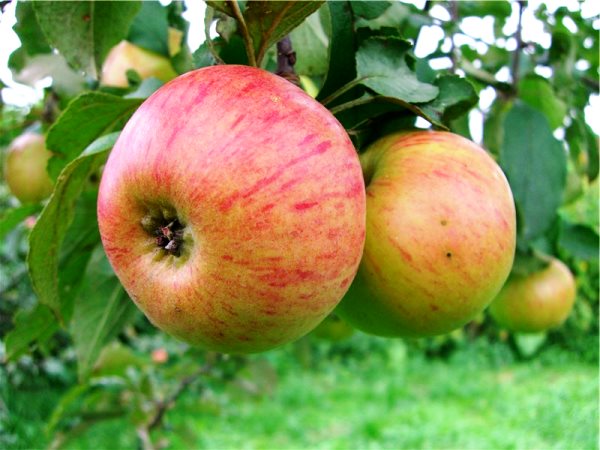

Features of transplanting various types of apple trees
Almost all apple trees are planted according to the same pattern, but there are slight differences for each species.
Columnar
The columnar apple tree is transplanted using standard technology. The most important thing is not to damage the root system - when digging up, you need to form an integral and dense ball. The most appropriate time for transshipment is early April. Please note that apple trees of this species do not take root well in too moist soil, so it is important to provide them with high-quality drainage.
Video: transplanting columnar apple trees
Dwarf
Dwarf plant varieties can be planted both in the shade and in open areas. However, it is worth remembering that the distance between them must be at least 3 m.After transplanting, you need to compact and mulch the soil surface. A recess is made around the pit for watering.
Dichka
The wild apple tree takes root well in the spring, so it is necessary to transplant the plant in early March. Experts advise to organize for this tree a place of future planting, which is the closest to the conditions of the previous growth.
Did you know? The maximum amount of vitamins is in green unripe fruits. In the process of ripening, apples lose a certain amount of nutrients.
Seedling preparation
It is better to transplant a two-year-old tree. This is the most successful planting material. The holes are prepared in advance: in the fall for 30 days, in the spring they do it in the fall. If the sprout has damage, then the affected fragments are cut with a pruning shears. It is necessary to remove the layers to the level where the healthy tissue will be. The extra long parts are removed in the same way. It is worth knowing that the size of the crown corresponds to the parameters of the root system. Therefore, when digging, you need to rely on this.
Before transplanting, the soil is thoroughly shed. It:
- soften the soil;
- will simplify digging.
It is worth digging up the earth with a shovel, then picking it up with a pitchfork. To refresh, revive the roots, after digging them up, they are placed in water for a couple of days. The affected, cut off areas are treated with garden pitch.
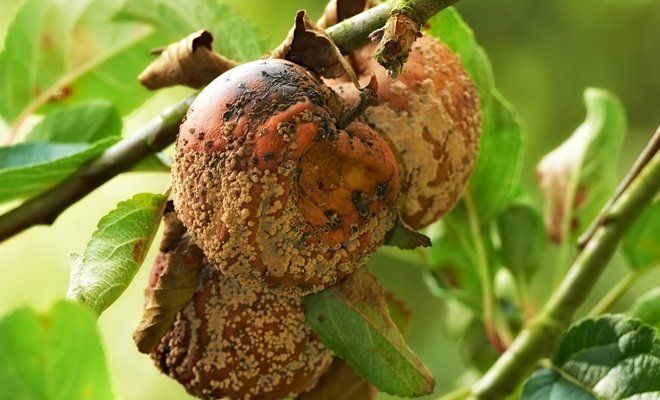

Tree care after transplant
A transplanted tree, especially in an adult state, needs special care, and the advice of experienced specialists will help the fruit plant quickly take root in a new place.
- The tree needs to be watered frequently, namely once a week (for spring planting).
- After disembarking, in the first year, you should not dig the soil.
- The soil must be mulched with humus and peat.
- For the winter, the trunk must be insulated and protected with non-woven material, roofing felt or spruce branches.
- In the spring, you need to prune branches to update them as soon as possible.
- After the tree has been transplanted, flowers must be removed from it in the first year.
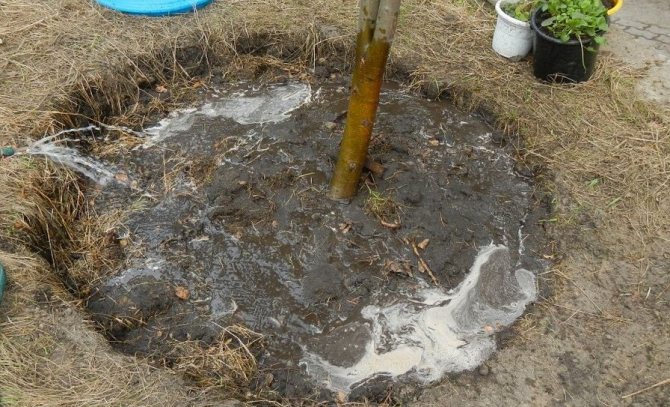

Taking into account the above tips and recommendations, it is possible to transplant an apple tree in adulthood, and the observance of simple agricultural techniques will not only save, but also increase the yield of the fruit tree.
Optimal timing for planting
When digging and replanting apple trees, the most important factor affecting the subsequent survival and development of a tree is the timing and weather conditions, soil and air temperature.
In the spring
Spring transplantation is carried out as early as possible, before the start of sap flow and budding. It is advisable to carry out the procedure in cloudy or rainy weather, without wind.
A spring transplant is carried out if it was not possible to transplant in the fall - it was dry, hot, or frosts began early.
In summer
The optimal time for a summer transplant is the end of June, the first half of July. An apple tree with a large earthy clod is transplanted. Before the procedure, almost all the foliage is removed and the tree is thoroughly watered so that the lump does not disintegrate during transfer.
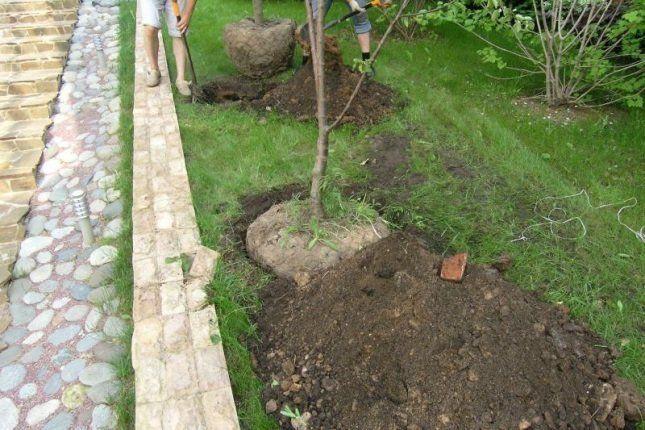

After planting, the apple tree is regularly and abundantly watered for the first couple of weeks. Evening spraying will be useful, as well as alternating root watering with sprinkling. The root zone of the tree is mulched with organic matter (cut grass, parts of plants without seeds, green manure). In the hot part of the day, the apple tree is shaded for better survival.
In autumn
In autumn, the apple tree is transplanted when all the leaves have fallen, and from older trees, all the fruits. The tree must fall into a dormant state. It happens that some of the leaves hold on tightly and do not fall off in any way. In this case, the gardener needs to trim the remaining foliage itself.
The apple tree grows thin fibrous roots at an air temperature above +4 C degrees.Do not replant in early autumn when the air temperature is still quite high. But it is also not recommended to delay until frost - a late transplant can cause the death of an apple tree in winter. The optimal time is from the end of September to the end of October, depending on the region of cultivation, 3 weeks before the onset of frost.
See also
Instructions on how to properly close up a hollow in an apple tree and the better to cover it up
To read


Transplanting seedlings in the fall
Apple tree seedlings in the fall, like older trees, begin to plant after the leaves fall and until the ground freezes. By this time their wood matures and the tree is ready to endure the conditions of the cold season.
A dug up seedling with un-fallen leaves will have another problem. It will most likely be overdried, since it is through the leaves that moisture evaporates.
If it becomes necessary to plant just such an apple tree, then it is necessary to cut off all the leaves on it.
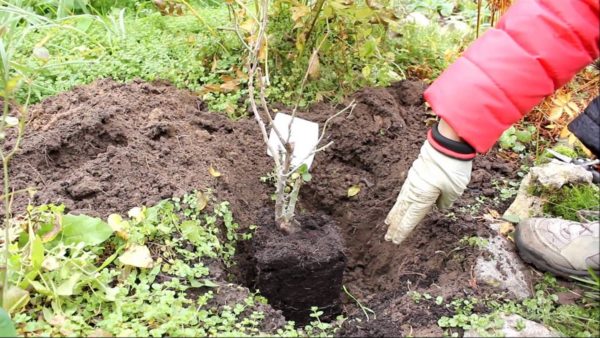

On the transplanted seedling, it is necessary to cut off all the leaves.
If it is necessary to store the seedling, its roots are placed in a waterproof bag, to which wet sawdust, sphagnum moss or peat are added. For long-term storage such measures are not suitable and then it is better to dig the seedling.
A pit for planting a seedling must be prepared in advance by filling its lower part with a mixture of fertile soil selected from the very top when digging a hole, compost, peat. Potassium-phosphorus fertilizers are also added. And nitrogen fertilizers are applied in the spring.
A pit measuring 0.5 x 0.5 x 0.5 m is quite suitable for a seedling.
Watch a video about transplanting apple tree seedlings in the fall:
Important is the question of the planting depth of the apple tree.
You need to plant him at the same level as in the nursery where he grew up. Its root collar should be at the level of the ground, but given that the soil then settles, it is placed 3-5 cm higher. Otherwise, the deepening of the root collar will affect its development and fruiting.
Important! Planting a tree care must be taken not to curl up the roots.
And for good distribution and strengthening of the roots in the soil, it is recommended to make good enough watering after planting.
This must be done even if it has rained and the soil is wet.




